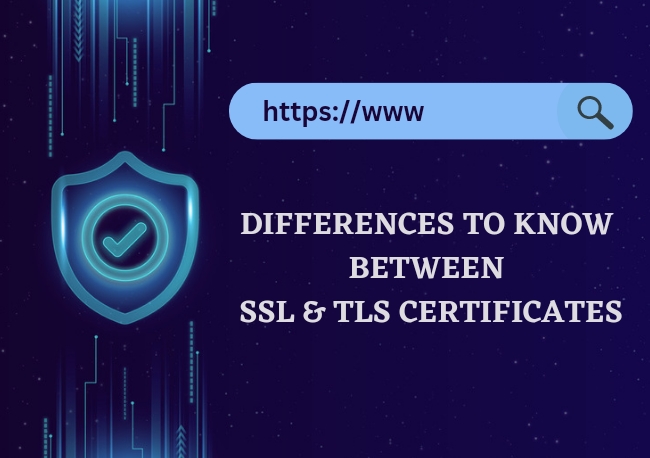
Have you ever wondered what the difference is between TLS and SSL? or Are they just the same thing with different names?
Both TLS and SSL are cryptographic protocols that authenticate data transfer between servers, systems, applications, and users. But they still have differences. Just like a cappuccino is different from Espresso, they may come from the same coffee bean, but there are differences we must respect.
Their work is similar; they both encrypt the data exchanged between a web server and a user, but they are still different from each other on many levels.
SSL was a first-of-its-kind cryptographic protocol, whereas TLS is relatively new and more of an upgraded version of SSL.
We need SSL/TLS certificates to ensure security from Cybercrimes, which have become a very common threat on the internet. The risk of data theft is the highest when its exchanged through client and server systems. SSL/TLS certificates tackle this issue by ensuring a secure exchange.
Let’s learn more about SSL and TLS certificates.
What is SSL?
SSL was first developed by Netscape in the year 1994; its main function was to ensure secure communication between client and server systems on the web. Eventually, it was standardized by IETF (the Internet Engineering Task Force) as a protocol. Since then, two versions of SSL have been rolled out by Netscape, which fixed the flaws of the first version. Currently, SSL 3.0 is in use.
SSL is a cryptographic protocol that uses explicit connections to establish secure communication between a web server and a client.
Also Read: 9 Types Of SSL Certificates – Make The Right Choice
What is TLS?
TLS stands for Transport Layer Security. It is a successor to SSL 3.0 and was first released in 1999 by the Internet Engineering Task Force. TSL v1.1 was released in 2008; it added protection against CBC (Cipher Block chaining) attacks. TSL v1.0 and TLS v1.1 were deprecated by Google, Apple, Microsoft, and Mozilla in 2020.
TLS v1.2 was rolled out in 2008. It included some additional features. The latest version of TLS was released in August 2018. It has major features which differentiate it from and makes it better than its previous versions.
It is also a cryptographic protocol. It provides secure communication between the web server and the client through implicit connections. It is the successor of the SSL protocol.
Also Read: Best Practices To Secure Your Website
TLS vs SSL: The Main Differences.
|
SSL |
TLS |
| SSL stands for “Secure Socket Layer”. | TLS stands for “Transport Layer Security”. |
| The first version was developed by Netscape in 1995. |
The First version was developed by the IETF in 1999. |
| There are 3 versions of SSL that have been released till today. SSL v1.0, SSL v2.0, SSL v3.0. |
There are 4 versions of TLS that have been released till today. TLS v1.0, TLS v1.1, TLS v1.2, TLS v1.3. |
| When it comes to algorithms, SSL supports the Fortezza algorithm. |
TLS does not support the Fortezza algorithm. |
| In SSL, the message digest is used for creating a master secret. |
In TLS, a Pseudo-random function is used for creating a master secret. |
| The Message Authentication Code Protocol is used in SSL. |
The Hashed Message Authentication Code Protocol is used in TLS. |
| SSL is more complex than TLS. |
TLS is simple. |
| SSL is less secure compared to TLS. |
TLS provides high security. |
| SSL is less reliable and slower. |
TLS is highly reliable and faster because it is upgraded and provides less latency. |
| SSL has been depreciated. |
TLS is still widely used. |
| SSL uses a port to set up an explicit connection. |
TLS uses a protocol to set up an implicit connection. |
What to choose – SSL or TLS?
Though both of the protocols provide the same service & are secured protocols along with the same HTTPS certification. As we’ve seen, SSL has depreciated and failed to keep up with the changing threats. And TLS is upgraded and more reliable, the natural choice would be going for a TLS certificate as it provides more security to the website.
